Along Fouled Ganga, Fresh Resolve to Make India’s Mother River Clean Again
Courts and Prime Minister Modi press for new operating system to stem pollution.
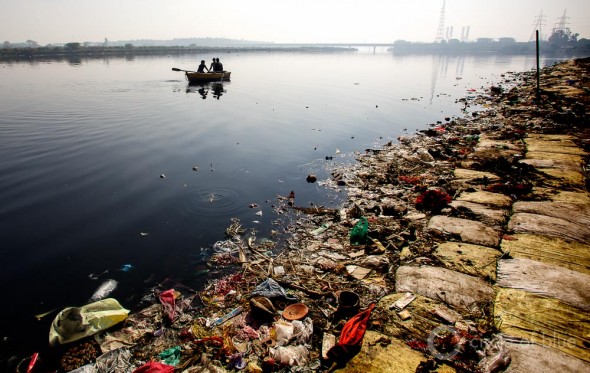
By Keith Schneider
Circle of Blue
NEW DELHI – Mahesh Chander Mehta, acclaimed by his peers as the dean of India’s tiny environmental bar, practices law from an airy office on the fourth floor of a dimly lit building in south Delhi.
Even late in the year, it’s still warm enough in India’s capital to keep the windows open. On the street, taxis and natural gas-fueled tuk-tuks clamor for space in the square by the Opp Mool Chand Metro Station. A poster of the Taj Mahal drapes the wall of a tobacco shop across the street. The view is unobstructed by the smokestacks and huge chemical storage tanks that once populated the banks of the Yamuna River, a tributary of the river Ganga that is close by.
The tuk-tuks, the Taj Mahal, and the riverbanks cleared of dangerous industrial facilities have professional standing in M.C. Mehta’s office. They are wound into the legal work of an exceptional career that, among other successes, forced a fuel switch for India’s public transport vehicles from leaded gasoline to cleaner compressed natural gas. His 1985 case in the Supreme Court removed toxic industries from the Yamuna. Another case, finished in the 1990s, saved the Taj Mahal’s luminous white marble from acid rain.
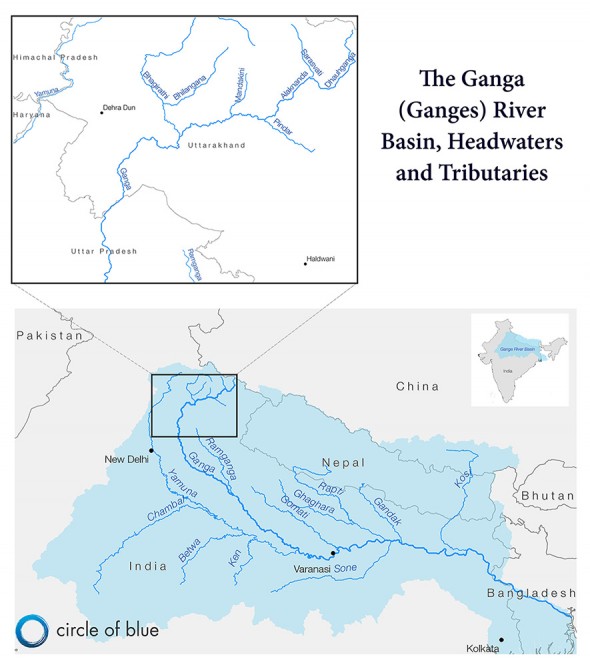
With each case, and there are hundreds, Mehta also pushed sympathetic jurists and the nation’s highest courts to become India’s only institutions truly dedicated to enforcing environmental and public health statutes. “We have laws in India to protect our people, and our land and water,” said Mehta in an interview. “I was one of the first to use them in the Supreme Court.”
The open window, though, also carries the unmistakable scent of unfinished business – the smell of raw sewage from the Yamuna, one of the Ganga’s largest tributaries, which receives the stinking tide of untreated toilet and manufacturing wastes from New Delhi’s 25 million residents.
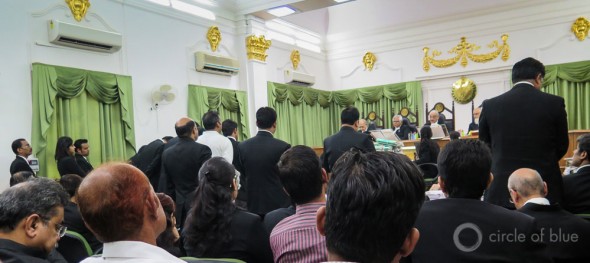
Ganga Pollution Case Still Open
In 1985, Mehta brought suit in the Supreme Court to clean up the Ganga, the Mother River of India, and its tributaries. Despite a long series of court orders to close polluting factories and build wastewater treatment plants, too many directives were ignored by state and national authorities. University and government water quality measurements show that the river is more foul, dangerous, and dirty than ever.
Reports by international organizations reach a similar conclusion. The Ganga, stretching 2,525 kilometers (1,600 miles) from the Himalaya in northern India to the Bay of Bengal in the east, is one of the planet’s most polluted rivers.
Yet as 2014 came to a close the celebrated lawyer, now 68-years-old, was more encouraged about the prospects for India’s holiest river. “The river is not dead,” he said. “It needs our help. India may be ready now to clean the Ganga.”
There are tangible political, regulatory, and legal clues that lead to Mehta’s wary optimism. In May, and again in August, India’s new prime minister, Narendra Modi, appeared on the banks of the Ganga in Varanasi, a holy Hindu city, and promised to clean up the river. “When I see the pitiable condition of the Ganga, I feel pained,” Modi said in May. “But I feel it is Maa Ganga who has decided I have to do something for her. The need of the hour is to restore the glory of the Ganga. Today Maa Ganga is calling us, her children, to make the river clean once again.”
The prime minister appointed a top lieutenant, Uma Bharti, as Minister for Water Resources and renamed the department the Ministry of Water Resources, River Development and Ganga Rejuvenation. In late September, the Modi government committed 510 billion rupees ($US 8.1 billion) in the next five years to stop discharges of untreated sewage and wastewater from 118 of the 222 towns and cities along the river.
In early December, in a second vital step, the Modi government indicated it was prepared to make permanent an indefinite halt in hydropower construction in Uttarakhand, a small mountainous state. The decision would safeguard water quality and water supply in the three fast-flowing Himalayan rivers that merge to form the Ganga.
Nineteen months ago, a vicious flood along those same rivers in Uttarakhand killed an estimated 30,000 people and wrecked the state’s hydropower industry. A special study commission, ordered into existence by the Supreme Court, issued in April 2014 a report on the causes of the flood. The report recommended shutting down 23 proposed hydropower projects and curtailing construction at others.
In an affidavit filed with the Supreme Court last month, B. B. Barman, the director of the Ministry of Environment, Forests, and Climate Change, said his agency would abide by the recommendations. “A cradle of civilization, it is a life support system for about half-a-billion people who live in its basin today,” Barman said. “Acknowledging these values of the National River Ganga, the government has accorded the highest priority to rejuvenating it. All along her path anthropogenic interventions have overburdened the flow of the river. The restoration of an aviral and nirmal dhara (clean and continuous flow) of the Ganga has thus become essential immediate steps.”
Between May and December, in the third and arguably the most important step to clean the Ganga, a three-judge panel of the Supreme Court in October transferred part of the decades-old Ganga pollution case, the sections dealing with industrial contamination, to the National Green Tribunal, its dogged sister court.
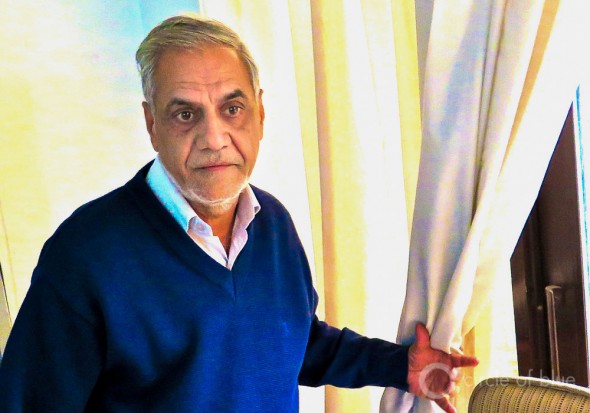
The NGT, established in 2010 and one of the three national courts in the world exclusively deciding environmental cases, has earned a reputation for judicial courage and clear rulings to stem industrial pollution.
In 2013, the NGT shut down the nation’s sand mines until they complied with sound mining practices and water quality statutes. In 2014, the Tribunal shut down the $US 675 million coal mining sector in Meghalaya, a northeast India state, because of rampant water pollution and mining practices lethal to young miners. It was the first time a state-level fossil fuel industry anywhere in the world had ever been shut for environmental safety reasons.
In handing over a sizable portion of the Ganga pollution case to NGT, the High Court said it looked to its colleagues to exert the same level of aggressive jurisprudence: to compel industries to stem the tide of chemical and biological pollutants into the Ganga, and to fine and jail executives who were slow to comply.
“We are confident that the tribunal, which has several experts as its members and the advantage of assistance from agencies from outside, will spare no efforts to effectively address all the questions arising out of industrial effluents being discharged into the river,” said the Supreme Court panel in its order.
Can the Ganga Be Cleaned?
Like the Jordan, the Nile, and the Yangtze, the Ganga’s waters sustain India’s religious faith, influence its culture, and mark its history. Millions of Hindu pilgrims gather for prayers along its banks at dawn and dusk, bathe in its filthy water, and cremate the dead in the red flames of hot pyres.
The river’s degradation is more than an insult to national pride. Fecal coliform contamination, and chemical pollution from chromium, mercury, lead, and all manner of chlorinated compounds cause disease and death, according to Indian health agencies.
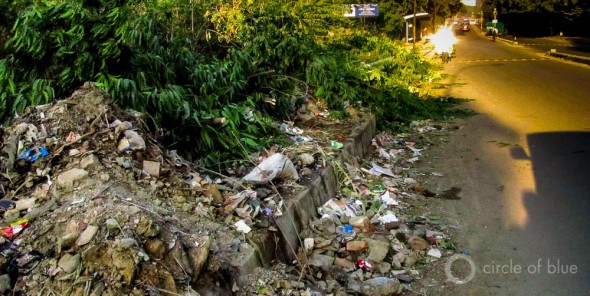
India hasn’t ignored the river’s condition. It just hasn’t been capable of summoning the collective national energy to clear the Ganga’s waters. Prime Minister Rajheev Gandhi tried in 1986, months after M.C. Mehta filed his pollution case, by forming the Ganga Action Plan.
More than 500 billion rupees ($US 8 billion in current dollars) were spent over 14 years to build 83 sewage transport networks and treatment plants, according to government figures. Most weren’t large enough or sturdy enough to operate well. They were meant to treat under one billion liters (264 million gallons) of the estimated 8.25 billion liters (2 billion gallons) of wastewater that the Ganga’s towns poured into the river daily, according to Central Pollution Board reports.
Newer Ganga cleanup campaigns — the Ganga River Basin Management Plan and the National Mission for Clean Ganga — have so far proved equally ineffective.
Taken as a whole, though, the biggest obstacle for the Ganga cleanup isn’t the money, tools, and practices, though those are critically significant. Instead, it’s whether India has the national spirit and the capacity to summon decades of focused investment and management to ensure that by mid-century Indians can swim, fish, and drink safely from the mother river.
India Degraded
The Ganga’s condition is emblematic of the decades of resource exploitation — and insufficient water and energy infrastructure investment — that have left India’s cities and countryside in dismal condition.
Over 80 percent of the nation’s rivers are badly polluted, according to national reports. The air in India’s cities, according to the World Health Organization, is among the dirtiest and most dangerous on the planet. Litter carpets roadsides and fields. Piles of garbage stink up India’s grimy cities. Running water and electricity are not available for a third of the country’s 1.27 billion people. Open defecation is practiced by millions of men, women, and children who don’t have access to latrines or toilets.
The astonishing state of India’s deterioration is gut-wrenching proof that the country’s environmental security system is not working.
For years, India’s environment and economy have suffered the twin and destructive insults of conflicted management. On the one hand, it takes years for companies to gain air, water, and land permits, what India calls “clearance,” from state and national regulators. The system, initially intended to foster careful review, has become a perfect generator of payoffs and bribes at every step of the process, according to the November findings of the High Level Commission, a panel charged by the Modi government to suggest regulatory improvements.
“The lasting impression has remained that the Acts and the appurtenant legal
instruments have really served only the purpose of a venal administration, at the
Centre and the States, to meet rent-seeking propensity at all levels,” said the authors of the report. “This impression has been further strengthened by waves of large scale ‘clearances’, coupled with major delays in approvals in individual cases. It should also be added that our businessmen and entrepreneurs are not all imbued in the principles of rectitude – most are not reluctant, indeed actively seek short-cuts, and are happy to collaboratively pay a ‘price’ to get their projects going; in many instances, arbitrariness means that those who don’t fall in line have to stay out.”
On the other hand, once clearances are issued, enforcement of the nation’s environment and health statutes is spotty at best, and more often doesn’t exist at all. Plant managers that pour raw wastes into India’s water, or blacken the air, are generally left alone. Just about the only laws India’s resource authorities take seriously are those protecting wild animals. Truckers convicted of transporting an improperly chained or poorly fed elephant, for instance, typically face huge fines and long jail sentences.
Though India has spent decades clawing at its landscape for coal, building power plants, installing big hydropower projects in the Himalaya, draining groundwater for endemic grain surpluses, building airports, and encouraging industries of every kind, the country’s development is sliding backwards. Economic growth has slipped to 5 percent a year, half of the annual rate from the first decade of the century. With four times as many people, India’s $US 2.1 trillion economy is little more than a tenth the size of the American economy. Electricity is in short supply and business-damaging brownouts and blackouts are daily, even hourly events in much of the country.
Prime Minister Modi has made it clear he understands that India’s economic weakness is tied to the nation’s ravaged ecology. Among his first national initiatives was Swachh Bharat, the “Clean India” campaign, to clear messes from India’s streets and countryside. The Swachh Bharat campaign may evolve into a national air and water cleanup program, said Indian business executives.
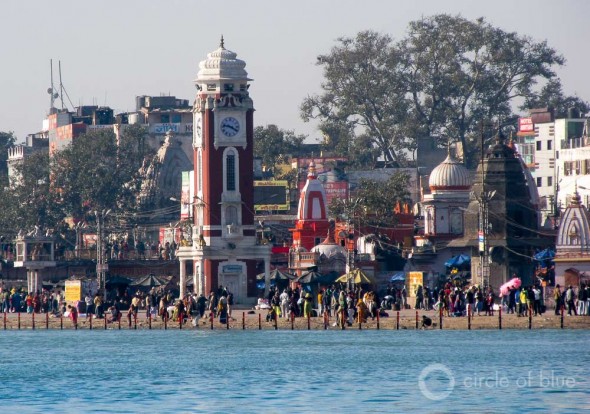
Modi’s reputation as an economic development specialist interested in sustainable goals was made as chief minister of Gujarat, an industrial state that built a portion of its relative prosperity with a sizable solar energy industry. In several speeches in 2014, Modi tried to assure his nation of the value of environmental and economic lessens learned decades ago in the United States and the West. Economic strength is closely tied to a clean environment. “In so far as the context of environment is concerned, the rich Indian tradition clearly stipulates that environment is a natural wealth,” Modi told reporters while visiting the U.S. Congress in September. “No one has the right to exploit it to his advantage. I think if India and the U.S. spread this message together to the whole world, it would be an ideal option to conserve the natural wealth and protect our environment.”
Role of the NGT
Four national government institutions are now sworn to the Ganga cleanup – the prime minister’s office, the Ministry of Environment, Forests, and Climate Change, the Supreme Court, and the National Green Tribunal.
Arguably the most important is the tribunal. Thirteen days before the High Court transferred the industrial portions of the Ganga case, the NGT was already at work making its presence felt along the Ganga. Acting on a petition filed by a citizen advocate and a public interest non-profit group, the tribunal fined Simbhaoli Sugar Mill and Distillery in Uttar Pradesh 50 million rupees ($US 800,000) for repeatedly discharging pollutants into the Ganga, and for violations of water quality statutes.
The tribunal also fined the Gopalji Dairy 2.5 million rupees ($US 40,000) for similar violations, which were damaging habitat for turtles and rare freshwater Ganga river dolphins.
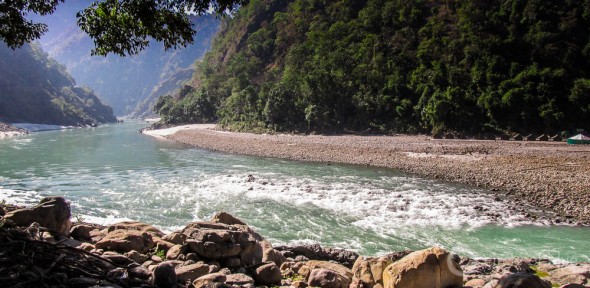
Behind the stiff penalties, however, runs a current of unease. Ever since Prime Minister Modi was elected, the leaders of the country’s environmental non-profits have worried that their pro-development leader was determined to weaken the National Green Tribunal’s authority.
But Ritwick Dutta, a prominent environmental lawyer in New Delhi, said he didn’t expect the Modi government to meddle with the NGT. “He needs a strong court to do what is needed on the Ganga,” Dutta said. Prakash Javadekar, the former national spokesperson for BJP, the prime minister’s party, and the Minister of Environment, Forests, and Climate change, said as much in responding to questions in November from Parliament about the influence of the Tribunal. Javadekar said neither he nor the prime minister would change the NGT’s role or authority.
On October 19, in ceremonies honoring the NGT’s fourth anniversary, Javadekar and Swatanter Kumar, the NGT’s chief judge and chairperson, assured the gathered audience that the Tribunal’s work was focused on pinning liability on polluters, settling disputes as a path to setting better environmental standards, and limiting pollution.
When his turn to speak came, Javadekar stressed the excellence of the Tribunal in executing its mission and the importance of ensuring compliance with the law as the pillar of India’s governance. “We exist in an accountable system. Environment protection cannot be achieved by shutting off. We need clarity of rules and legal positions and compliance. So we tell violaters, rectify. If not, then punishment. If that fails, then close,” Javadekar said. “In four years, the NGT is not just a building, it is an institution, and institutions are needed to create a system that works.”
On the Ganga, that system is being tested like never before.
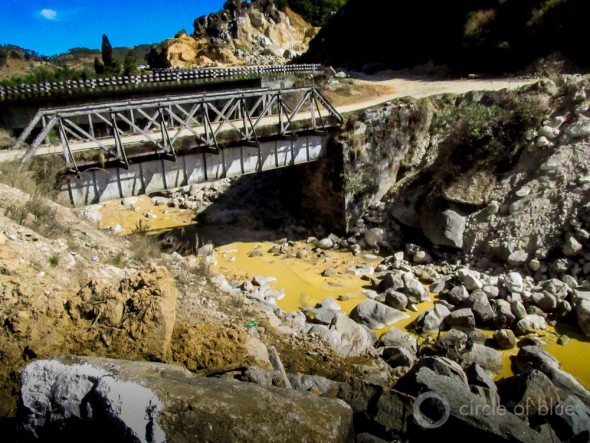
“There is no gainsaying that river Ganga has for the people of this country great significance not only in the spiritual or mythological sense but also in material terms for it sustains millions who are settled on its bank or eke out their living by tilling lands that are fertilized by its water,” three justices of the Supreme Court wrote in the October 29, 2014, order transferring a portion of the Ganga case to the National Green Tribunal. “Despite the experience of the past we have not lost hope, for the Central Government appears to be resolute in its efforts to ensure that the mission of cleaning the holy river is carried forward and accomplished. How far will the Government’s renewed zeal make any difference on the ground is for anyone to guess. What is, however, clear is that if the mission has to succeed, all those concerned will have to rededicate themselves to the accomplishment of the cause that will not only cleanse the holy river but comfort millions of souls that are distressed by the fetid in what is believed to be so holy and pure that a dip in its water cleanses all sins.”
The lights of store fronts switched on in India’s capital and the clamor of the streets grew more intense when M.C. Mehta, the renowned lawyer, summed up the challenge this way: “We’ve been involved in this case for 30 years,” he said. “I hope it takes less time than that to finish the work.”
Circle of Blue’s senior editor and chief correspondent based in Traverse City, Michigan. He has reported on the contest for energy, food, and water in the era of climate change from six continents. Contact
Keith Schneider

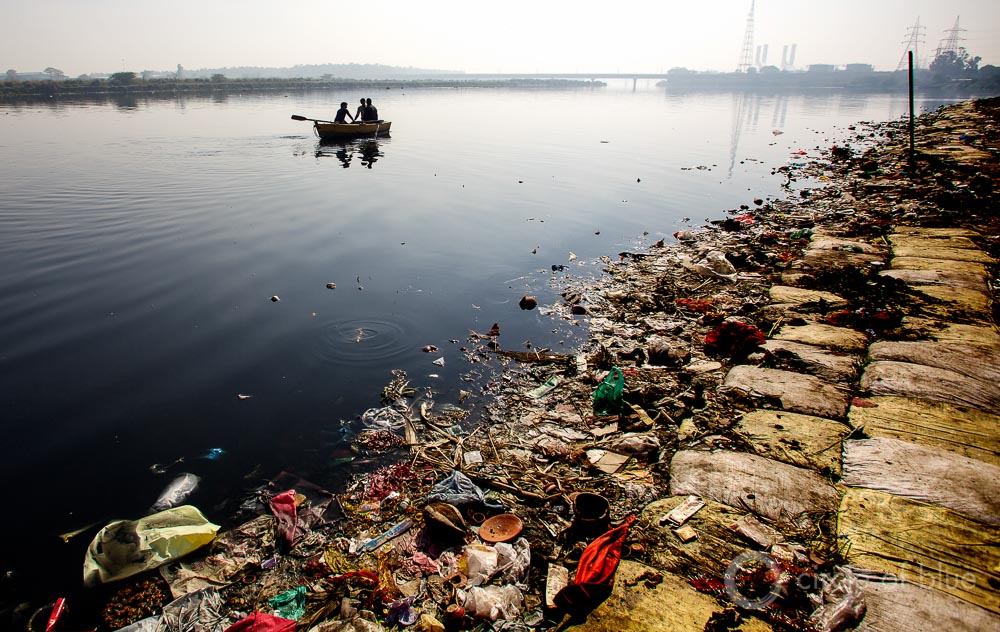

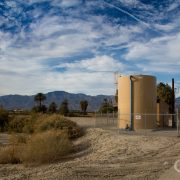
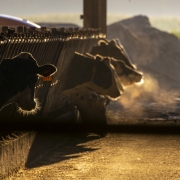
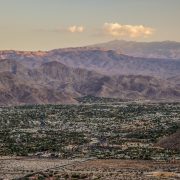
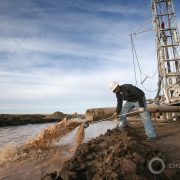




Another outstanding article on the world’s water problems by Keith and the team at Circle of Blue. I really enjoy the in depth tracking and telling of the story behind such major challenges, and learn a lot each time I read these pieces.
Cleaning the Ganga as a national mission is a noble goal that has persisted even as the river’s condition has festered. But this is no ordinary river. The sages in their wisdom deemed it sacred thousands of years ago, and laid down a dictum for the generations to come. Unfortunately, being holy, can also mean that the divine is unassailable, and can tolerate and revert all human abuse.
Mr Mehta and the NGT shine as guardians and as beacons of hope. Sitting in New York, I wonder how best I can help. What one reads in the regular news media suggests strong interest in Cleaning and Rejuvenating the Ganga and PM Modi’s commitment to these goals. Yet, one also reads of the government’s relaxation of environmental controls to favor business. Surely, one cannot have these be mutually consistent?
Coming back to the Ganga, the challenge is not just one of treatment and reduction of the waste load. As diversions have reduced flows in the wet and in the dry season in India’s rivers, the dilution capacity of the river to handle pollution is decreased, and the degree of treatment required to maintain a living river increases. The water diverted is used for economic activity — agriculture, energy production — all needed, but since it is supplied free or at minimal cost and not monitored, the inefficiency in its use is unclear. From a fiscal and an environmental perspective, India needs to take responsibility for its water and its efficient use, rather than looking for additional treatment sources, which will have significant capital and operating expenses, and do not directly contribute to economic productivity, and yet are essential for human and ecological health.
Again, back to the Ganga, an additional challenge will be heavily contaminated sediments from years of pollution. Even as the river water is purified these chemicals will continue to leach back from the sediments. Since the original polluters will be hard to identify, these become a public responsibility. A monitoring program for river flow and quality, with data that is openly made available so that all can see the progress being made, take pride in it, and reinforce the process is essential. Of course, a monitoring and metering program for water use and wastewater disposal controls is also essential, again with public access to the resulting data, to positively stimulate the “good” that people demonstrate through their actions at conservation and pollution reduction. The citizenry has to be engaged and transparency in information and trends is key.
Finally, it is time globally, and especially in India, to start thinking of one water — not drinking water, agricultural water, wastewater and stormwater, and to manage it as an integral resource. Technological innovations such as graphene filters that can help purify water — they pass only the water molecule and things smaller — while using much less energy than reverse osmosis, need to be brought in at multiple scales – household, industry, city to capture different parts of the water stream and transform it into water usable for a particular purpose. There is opportunity for business here — serving the poor and the rich with this essential resource. Of course, as such things increase water reuse, the need to take water from the rivers, and to discharge pollutants to them will decrease, and we will have cleaned the Ganga, and kept it that way.
After having read the article by Keith and the team at Circle of Blue, it is interesting to note the efforts & man-days spent by various stakeholders like media, lawyers, regulators, Policy bodies, institutions, citizens etc are not culminating into improvement in river water quality. Why? We generally speak a lot and not committed to “Do” it rightly. We only differentiate “Water and Wastewater – more so economically, whereas Nature does not differentiate, as it responds “Ecologically”.
The enforcement is very weak and institutions are not bothered about “Social goal” of protecting river system. There was a time that a Policy intervention was made to secure “Decentralized Sanitation Improvement” by bringing all building project under Environmental Clearance. Instead of bringing a quality change, this policy contributed to high level corruption. Having cleared so many projects, in how many buildings there are operating sewage treatment plants? Let us take even highly reputed campus like IIT, AIMS, IIMs etc, do they have operating sewage treatment plants? Such highly qualified institutions, with diverse departments do “Preach” but do they “Practice” to their own settings?.
All the affordable polluters (Hotels, Commercial buildings, Institutions, Hospitals, Educational campus etc) must introspect first, before pointing out fingers to “Municipality”. Small drops makes the Ocean, so decentralised way of improving sanitation is the way we need to move forward. For this a sense of dedication and voluntary way of implementation is essential. All these are possible if following driving forces are secured:
a) Price the Cost of water properly
b) Restrict disposal avenues
c) Treat the sewage and supply as alternate resource for industrial process purpose or rejuvenate lake, pond or at-least aquifer
d) Set target to each State Pollution Control Boards for sanitation improvement (Population versus extent of sewage collected, treated and reused/recycled or receiving water body quality improved)
e) Review all the sewage treatment plants implemented under JnNURM scheme, whether they delivered intended project design objective or have led to NPA (Non Performing Asset creation)
India is 4 to 5 decades behind any of the OECD Countries and can we continue to be in such a situation. water and sanitation Decade commenced in 1981 and we have completed 35 years. What is the outcome – Water for about 70% of population, but sanitation is only to < 10% of population. India is also one among top 10 water Poor Countries. Is it not time that we introspect sewage as an alternate resource for our future "Development pursuit". Treated sewage and Industrial Development pathway should be strongly linked for "Total Water Management". All these are possible, if Bureaucracy and Regulatory Bodies work with sense of dedication and Judiciary to play "Watchdog" role to question Corruption at every level.
Dreaming for such a new vigour and hope with the articulation by PM, there is some sense of conviction for doing it rightly
Kuttiappan N.K
Great work from Keith and his team!
Government must focus now on education… probably start from educational institutions, in order to ensure that the new and the next generations understand and value the significance of growing responsibly.
I have been following the news concerned with the ‘clean-up’ projects of the Ganga / Jumna rivers of N.Indian plains, which are host to a very large human population, for sometime now.
Both rivers flow through a region having a high concentration of industrial areas from which an enormous amount of industrial/chemical waste effluent is added to the waters of these rivers.
I have recently come across a UK firm which is introducing a technology based on the most advanced concepts in water purification and which is capable of handling a wide spectrum [nuclear, chemical & organic ] of pollutants at a cost effective price.
If need be they are prepared to demonstrate the capability of their technology if you send them a sample.
Arvia Technology
The Heath Business and Technical Park
Runcorn Cheshire WA7 4EB.
+44 (0) 845 123 1264
info@arviatechnology.com
website : http://www.arviatechnology.com/